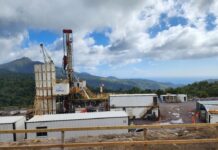By Felicia J. Persaud
News Americas, FORT LAUDERDALE, FL, Weds. May 17, 2023: In the grand chessboard of global geopolitics, the Caribbean and Latin America are experiencing a tectonic shift, akin to a thrilling thriller with unexpected plot twists and high-stakes outcomes. Over the past four months, the narrative has been dominated by the rising dragon of the East – China, making strategic moves that are reshaping the region’s economic landscape.
China’s influence is not just a passing wave, but a well-calculated part of its ambitious global expansion strategy, embodied in initiatives like the Belt and Road Initiative. Over the last 20 years, China has become the second largest trading partner of Latin America & the Caribbean (LAC). Between 2000 and 2020, China-LAC trade grew 26-fold from USD 12 billion to USD 310 billion. China is also among the top sources of foreign direct investment and finance for the LAC region.
China has invested over $10 billion in mainly six Caribbean countries between 2005 and 2022 focused on the tourism, transportation, extractive metals, agriculture, and energy sectors.
•Jamaica: $3.16 billion
•Guyana: $3.01 billion
•Trinidad and Tobago: $2.28 billion
•Antigua and Barbuda: $1 billion
•Cuba: $740 million
•Bahamas: $350 million
From 2005-2020, Chinese investment in energy and infrastructure throughout the Caribbean reached upwards of $7 billion.
•China’s SOE China National Offshore Oil Corporation (CNOOC) has a 25% stake in the Stabroek block25, an offshore crude oil deposit projected to produce upwards of 4 million barrels per day by 2025. ExxonMobil holds a 45% interest alongside Hess Guyana’s 30 percent stake.
•In 2011, China’s sovereign wealth fund acquired a 10% interest in Trinidad and Tobago-based Atlantic LNG, one of the world’s largest natural gas producers.
•In 2019, a subsidiary of Chinese national oil company CNPC (CNPC is the primary and stands for China National Petroleum Company) Great Wall Drilling, began drilling oil off Cuba’s coast as part of a joint venture with state-owned oil firm Cuba Petroleum Company (CUPET).
•In 2017, Jamaica’s Alpart alumina refinery was purchased by Chinese state-owned enterprise, Jiuquan Iron and Steel Company (JISCo) for $299 million.
•China National Corporation for Exploration and Development of Oil and Gas (CNODC) currently has a 30% stake in the consortium developing the Stabroek Block. The Stabroek Block is 6.6 million acres and holds an estimated recoverable resource of more than ten billion oil-equivalent barrels.
Yet, in this unfolding drama, China is not the only player. Saudi Arabia has also been extending its reach, with the Saudi Fund for Development making noticeable inroads. Saudi Arabia, through the King Salman Humanitarian Aid and Relief Center (KSrelief), has provided more than $1.3 billion in aid to the Caribbean countries, the Saudi foreign minister has said.
Prince Faisal bin Farhan made the remarks during the 28th Ordinary Meeting of the ACS Ministerial Council in Guatemala recently.
He said the Saudi Fund for Development acts as an integral part of the Kingdom’s expanding global partnerships and is currently working on projects worth $240 million within the Caribbean.
While these foreign powers bring economic opportunities, critics express concern about potential erosion of sovereignty, risk of crippling debt burdens, and possible environmental and societal effects. Amid these opposing currents, the billion-dollar question remains: Why has the US allowed such significant foreign influence in what is historically its sphere of influence?
Seemingly hamstrung by perceived risks and corruption, American investors have neglected their own backyard, viewing it as a high-risk “wild west.” This has allowed countries like China and Saudi Arabia to seize the moment, filling the investment vacuum with strategic moves.
As the CEO of Invest Caribbean, it feels like we’re on a battlefield, fighting an uphill battle to finance quality projects in a region that, ironically, is rich in opportunities. The reluctance of the US to finance its neighboring regions has left a void that China and Saudi Arabia are all too willing to fill.
But the story is far from over.
The Caribbean and Latin America are standing at a pivotal crossroads. What they need desperately now is a fund that can nurture small to medium private sector enterprises while offering both debt and equity to fund larger, quality projects that stimulate job creation and regional growth. Invest Caribbean, a Caribbean-American owned and US registered entity, is ready for the challenge.
The final chapter of this story remains unwritten, but the stage is set for a dramatic climax. Will the US realize the potential of its own backyard, or will it continue to stand by as other global powers rewrite the narrative? The choice is clear: It’s time for the US to step up and join the game, or risk being left behind in the thrilling saga of global geopolitics.
EDITOR’S NOTE: The writer is CEO of ICN which owns the brands, Invest Caribbean, CaribPR Wire, Hard Beat Communications and News Americas – the Black Immigrant Daily.








